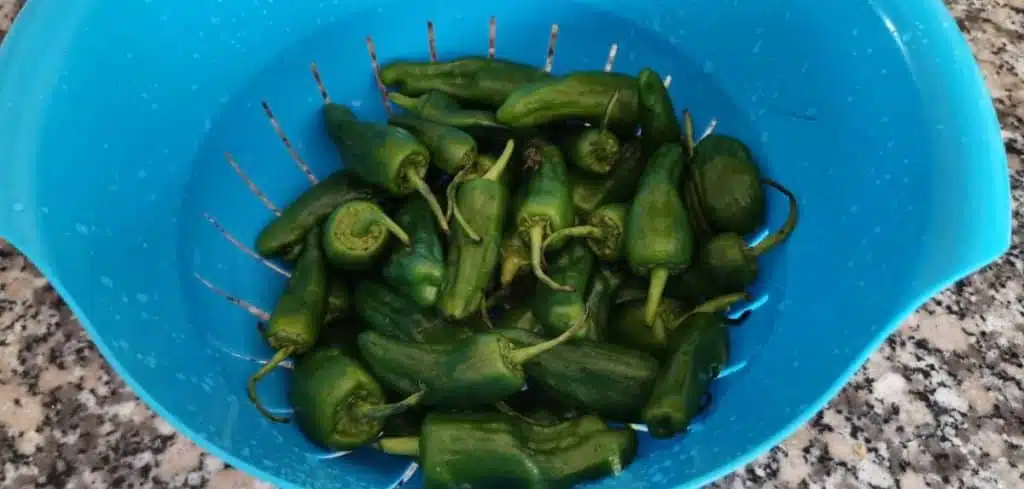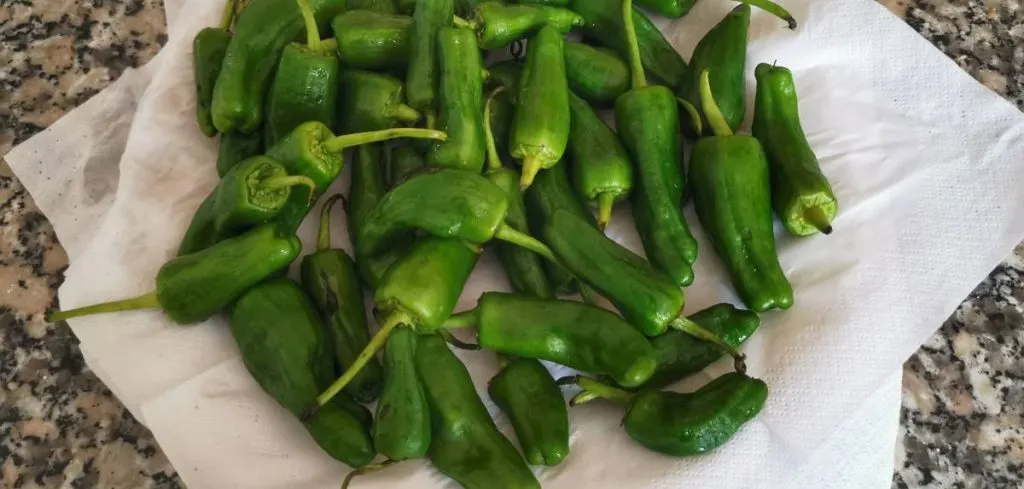Scored some Padrón peppers at the local market? You got yourself a true gem! Explore more about pimientos de Padrón and learn the only Spanish Padrón Peppers recipe you will ever truly need to try.
Learning how to cook Padrón peppers is easy. Fry the peppers in hot extra virgin olive oil, allow it to brown and blister, and have it ready to serve with just a sprinkle of extra oil and sea salt.
This recipe is simple and well-loved – in fact, it is one of our favorite Spanish Tapas.
What is so special about these Spain peppers? Let’s dig a little further before you do the cooking.
What are Padrón Peppers?
Padrón Peppers in Spanish is pimientos de padrón. They are also called Herbón peppers. They got the name from the municipality of Padrón in the province of La Coruña in Galicia, Spain, where they are from.
Before, the Padrón pepper season in Galicia was only around late June to September, but now thanks to greenhouses, farmers can grow this famous pepper throughout the year.
These Spain peppers are popular for a very cool reason: about ten to 25 percent of Spanish padrón peppers are hot, and the rest are not – and you cannot tell until you have popped one into your mouth!
There is even a Galician way of describing this: “Os pementos de Padrón, uns pican e outros non” (meaning “Padrón peppers, some are hot, some are not.”) Another one goes like, ““Pimiento de Padrón, pequeño pero matón” (roughly meaning “Padrón pepper, little but a killer.”)
How is this possible? It all depends on the amount of water and sunlight (plus other factors) that each pepper receives as it grows.
As for the appearance, Spanish padrón peppers are about 5 centimeters or 2 inches in length. Their colors vary from bright green to yellow-green, and even sometimes red.
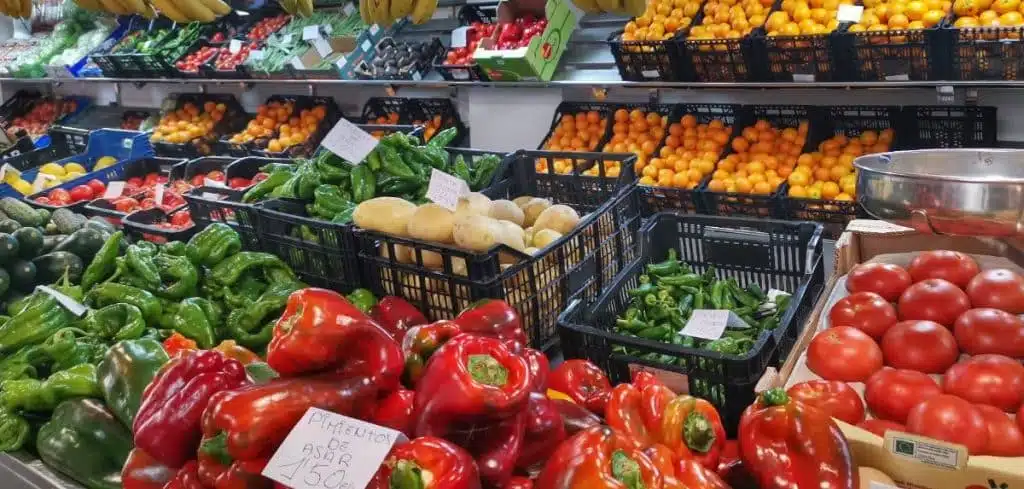
Are Padrón Peppers hot?
Spanish Padrón peppers are not that hot. This variety of pepper measures 500 to 2,500 Scoville Heat Units on the Scoville Scale, which is generally classified as mild. Some of the hotter varieties as compared to pimientos de padrón include jalapenos (3,500 to 4,500 SHU) and serrano (7,000 to 25,000 SHU.)
Be careful, though, as I have said above: there is about ten to 25 percent in a bunch of Padrón peppers that will surely surprise you for being hotter than expected!
How do you eat Padrón Peppers?
There are plenty of Padrón pepper recipes out there. Most eat Spanish Padrón peppers as a snack. They are among the popular Spanish vegetarian tapas.
One popular way of cooking Padrón peppers is by frying them in olive oil until the skin blistered. This pepper variety truly goes well with olive oil, making it a staple menu item in most (if not all) Spanish tapas bars.
Other ways on how to cook Padron peppers include:
- Stuffed Padrón Peppers – this may be far from traditional, but who can simply resist stuffing peppers with different types of cheese?
- Pickled Padrón Peppers – another way of enjoying blistered pimientos de padrón. The peppers are placed in a mason jar filled with white vinegar, sugar, garlic, and other seasonings and spices.
Are Padrón and Shishito Peppers the same?
No, they are not the same, although they both belong to the Capsicum annuum family. Padrón and Shishito Peppers look alike, though, especially when cooked. What makes the big difference is that Shishito peppers come from East Asia while Padrón comes from northwestern Spain.
Are Padrón Peppers healthy?
Spanish Padrón Peppers are a good source of vitamins C, B6, and K. This helps fight inflammation and free radicals. They are also packed with protein, calcium, and iron.
Where to buy Padrón Peppers
While Galicia is the perfect place for growing Spanish Padrón peppers, these pimientos have found their way in greenhouses throughout Spain and even beyond. Check your local vegetable market stall and online specialty stores for pimientos de padrón merchants selling and/or delivering to your area.
If you can score some, place the peppers inside a sealed bag and keep it in the crisper or chiller. If you do not cook your Spanish Padrón peppers anytime soon, you can store them inside the freezer, cut or uncut.
Tips for preparing Padrón Peppers
- Choose a high-grade extra virgin olive oil. The peppers will be quite oily, so better choose a good quality olive oil to use for frying. Read about its flavor profile, too, and see if it complements the taste of pimientos.
- Dry the Spanish Padrón peppers well before adding them to the hot oil so that there will be better browning and blistering. This will also prevent the oil from splattering because of the water.
- When seasoning your pimientos de padrón, opt for a good variety of sea salt for best taste.
- After cooking, it is essential to let the peppers cool down for a few minutes before serving them.
How to cook Padron Peppers – Step-by-Step Instructions
1. Wash the Padrón peppers in running water. Afterward, dry them well.
Tip: Use a colander to wash the peppers and drain the water out immediately. For drying, line up the peppers on an absorbent paper towel.
2. Heat extra virgin olive oil in a heavy skillet. Once the oil is hot, add the Padrón peppers.
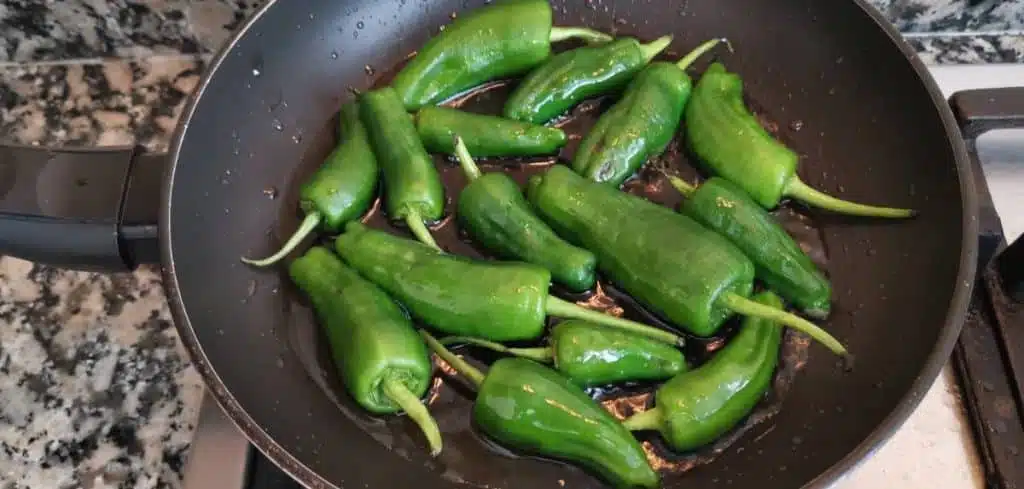
3. Do not move the peppers around as they start to cook in the pan. Once the surface starts to blister and brown, turn them on the other side.
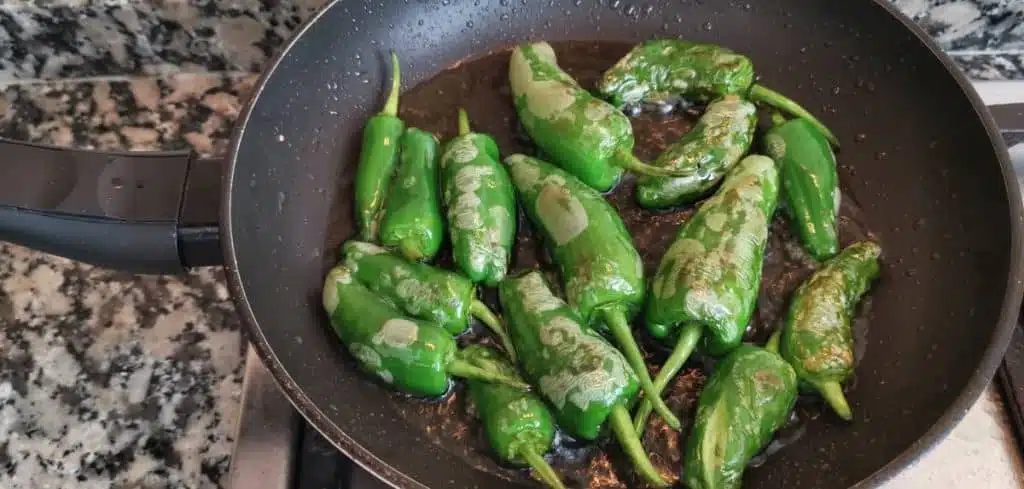
4. Flip the Padrón peppers over and shake them up a couple of times until all sides are brown and blistered.
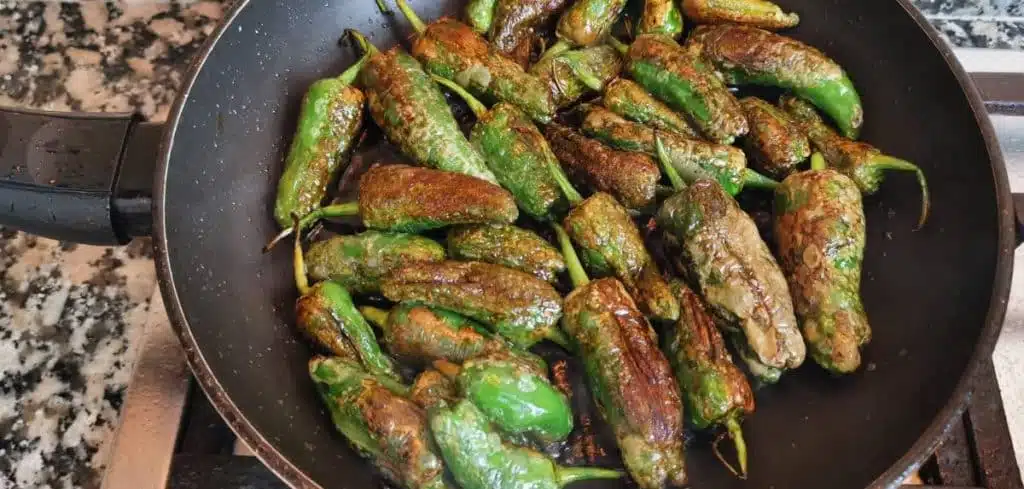
5. Transfer your Spanish Padrón peppers to a plate and sprinkle sea salt on top. Drizzle some extra virgin oil to finish. Let the peppers cool down for a while, and then serve.
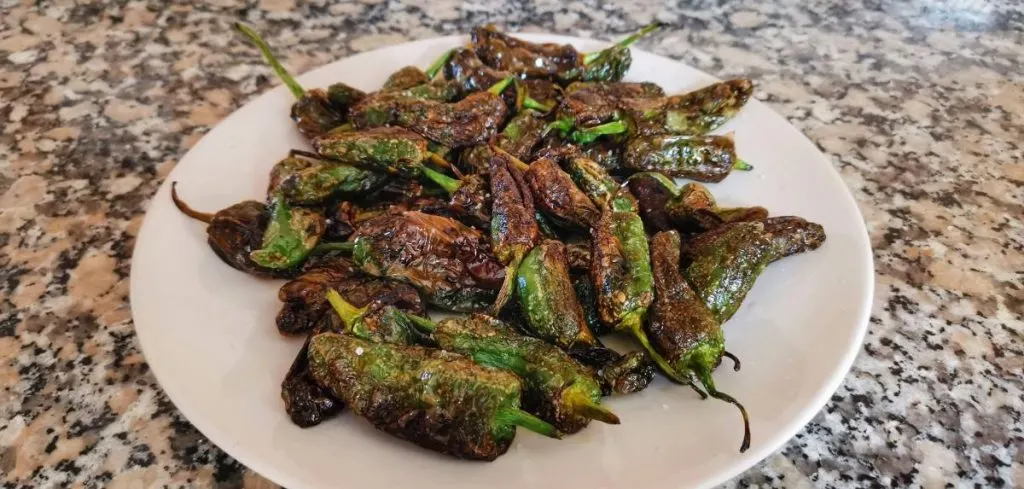
Easy Padrón Peppers Recipe
Easy Padrón Peppers Recipe
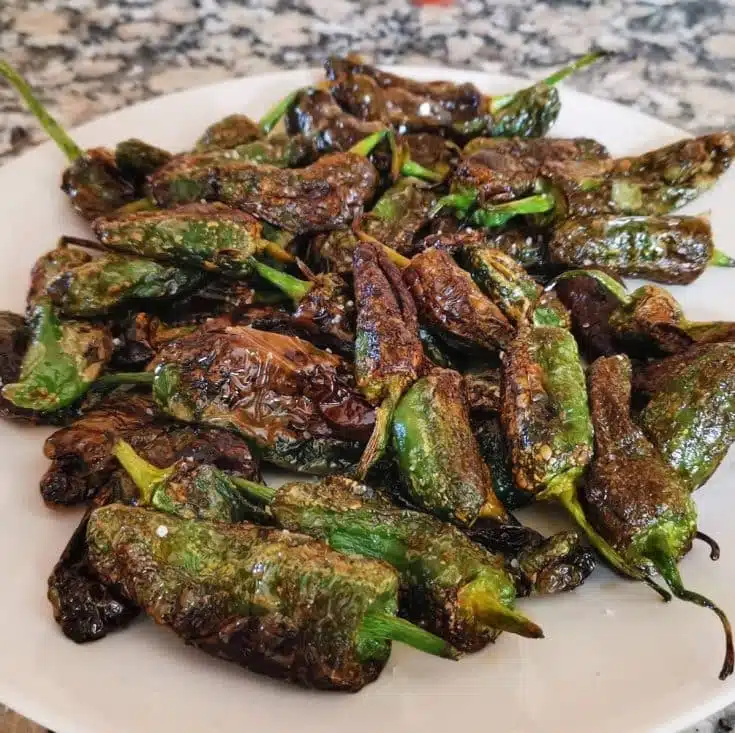
Ingredients
- 0,7 pounds or 300 grams of Padron peppers
- Extra virgin olive oil
- Sea salt
Instructions
1. Wash the Padrón peppers in running water. Afterward, dry them well.
Tip: Use a colander to wash the peppers and drain the water out immediately. For drying, line up the peppers on an absorbent paper towel.
2. Heat up extra virgin olive oil in a heavy skillet. Once the oil is very hot, add the Padrón peppers.
3. Do not move the peppers around as they start to cook in the pan. Once the surface starts to blister and brown, turn them on the other side.
4. Flip the Padrón peppers over and shake them up a couple of times until all sides are brown and blistered.
5. Transfer your Spanish Padrón peppers to a plate and sprinkle sea salt on top. Drizzle some extra virgin oil to finish. Let the peppers cool down for a while and then serve.
Nutrition Information:
Yield:
4Serving Size:
1Amount Per Serving: Calories: 177Total Fat: 4gSaturated Fat: 1gTrans Fat: 0gUnsaturated Fat: 3gCholesterol: 0mgSodium: 156mgCarbohydrates: 35gFiber: 6gSugar: 17gProtein: 5g
The nutritional information provided is approximate and can vary depending on several factors, so is not guaranteed to be accurate.

